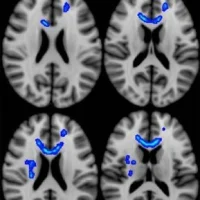Researchers in Austria have unraveled how small cell lung cancer (SCLC) is not usually detected until it is at an advanced stage, when metastases have already formed. Chemotherapy is very effective initially but, within a year, cancer recurs and this time does not respond to a course of chemotherapy, they said.
The research group headed by Gerhard Hamilton, University Department of Surgery at MedUni Vienna, has now managed to identify the reason for this chemoresistance. The group’s results have recently been published in the journals “Cell Adhesion and Migration” and “Trends in Cancer”.
Lung cancer is one of the most commonly occurring types of cancer in Austria. The majority of the 4,000 people who die from it every year are long-term heavy smokers with 85 percent of cases of the histological type known as non-small cell lung cancer (NSCLC), which responds very well to targeted treatment and immunotherapy.
The remaining 15 percent of patients have SCLC, which consists of neuroendocrine cells and metastasises very quickly. It is treated with cytotoxic chemotherapy and radiotherapy. Initially patients respond very well to platinum-based therapy in combination with the drug etoposide but, within a year, resistant tumours recur. Further treatment is with topocetan or anthracyclines but the response rate is poor and, at this stage, patients are only expected to survive for a few more months.
A peculiarity of this type of cancer is that a lot of cancer cells migrate into the blood where they circulate and form metastases elsewhere in the body. A year ago, the research group led by Gerhard Hamilton, in collaboration with Robert Zeillinger (Molecular Oncology Group, University Department of Gynaecology and Obstetrics) and Maximilian Hochmair (Otto-Wagner Hospital), managed to establish permanently cultivating tissue cultures of these circulating tumour cells.
It was found that individual circulating tumour cells were sensitive to chemotherapy drugs but that, in every case, they spontaneously formed large aggregations, or cancer clusters, with oxygen-deprived cores. These cancer clusters are resistant to chemotherapy, firstly because the drugs cannot penetrate sufficiently and secondly because many of the cells are dormant due to the lack of oxygen. This lack of oxygen means that radiotherapy is also ineffective, because there are no oxygen radicals available and these are necessary to destroy the cancer cells.
The researchers were able to provide ground-breaking proof that resistance to chemotherapy and radiotherapy is due to the circulating tumour cells forming clusters. As far as treatment is concerned, this means that the first cycle of chemotherapy only destroys the main tumour mass and the circulating cancer cells, which have formed clusters, subsequently lead to recurrence.
Completely new therapeutic approaches must therefore be developed to prevent the formation of these cancer clusters or to break them up, the researchers concluded. Small cell lung cancer follows the model of an aggressively metastasising cancer – so that these findings could equally well apply to other malignant diseases.
Reference:
“Small cell lung cancer: circulating tumor cells of extended stage patients express a mesenchymal-epithelial transition phenotype”. G. Hamilton, M. Hochmair, B. Rath, L. Klameth, R. Zeillinger (doi.org/10.1080/19336918.2016.1155019; 2016, in press) and “Metastasis: circulating tumor cells in small cell lung cancer”. G. Hamilton, D. Moser, M. Hochmair (Cellpress, 3, March 2016).










